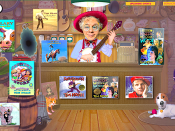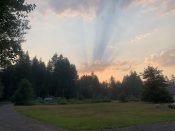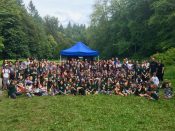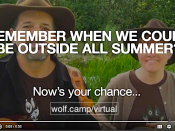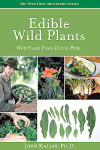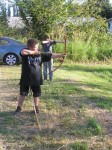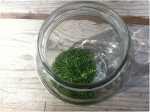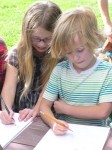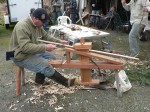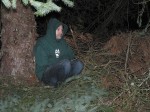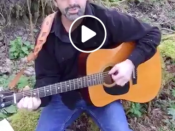 Book Review by Hannah
Book Review by Hannah
John Kallas’s Edible Wild Plants: Wild Foods from Dirt to Plate is one of my favorite wild edible field guides. I like to think of this book as a primer in foraging because it details how to find, harvest, process and eat over 23 different wild plants.
Edible Wild Plants is a comprehensive guide that addresses many of the wild edibles that we can find first and foremost in our backyards. Instead of planting conventional lettuce and other nutrient-poor plants, we can eat the “weeds” — the nutritious wild greens that already grow in our backyards, like Sheep Sorrel, Dandelion, and Chickweed.
Edible Wild Plants is a great book for all levels of naturalist experience. If you are interested in foraging, cooking, gardening, self-sufficiency and sustainability, or even teaching about wild food, this is the book for you.
Who is John Kallas?
John Kallas is a trained botanist, nature photographer, writer, researcher and teacher. He has had over 35 years of experience in hands-on field research, as well as a doctorate in nutrition, a master’s in education, and degrees in biology and zoology. Kallas leads many Wild Food Intensives every year, most notably the Native Shores Rendezvous. He is also the author of several books.
In 1993, Kallas founded the Institute for the Study of Edible Wild Plants and Other Foragables, including an educational branch, Wild Food Adventures. Kallas currently lives in Portland, Oregon, where he offers workshops and multi-day intensives on wild foods. He is currently working on a second volume of the Wild Food Adventure book series — Edible Wild Plants is volume 1.
What is Edible Wild Plants: Wild Foods from Dirt to Plate?
In Edible Wild Plants, Kallas teaches how to identify, harvest, process, cook, and enjoy the many wild plants that grow near us.
The book is incredibly full of information, with a chapter dedicated to each plant. The book also contains an abundance of detail — full-color pictures, diagrams, look-a-likes, conceptual chapters (such as ‘crafting a wild paradise’), nutrient charts, range maps, and much, much more.
Edible Wild Plants is organized into three sections, not including the introduction. Part I provides an introduction to wild foods, such as identifying and enjoying wild foods, understanding what is edible and which parts of plants are edible, and a section on foraging tools. Part II is the field guide, with 15 chapters covering 23 plants in total. This section is further divided into four sub-sections, which Kallas has classified as ‘flavor profiles’ : Foundation Greens, Tart Greens, Pungent Greens, and Bitter Greens. Lastly, Part III addresses the role of “Wild Foods in Society,” including conceptual ideas, suggestions and practical guidance for how to utilize wild foods for personal and societal use. In the sub-section ‘Crafting a Wild Paradise,” Kallas also introduces the idea of ‘self-perpetuating wild gardens,’ in which sustainable annual wild food gardens are created without having to garden.
The recipes that Kallas provides are refreshing, easy to understand, and enjoyable. I like that he includes recipes for leafy greens that aren’t just standard salads or steamed veggies. My favorite recipes in this book include: Curly Dock pie filling, Pasta with Sow Thistle Greens, and Mallow Meringue.
Why is Edible Wild Plants: Wild Foods from Dirt to Plate a must read?
Edible Wild Plants is a comprehensive guide that combines the identification and harvest of wild edibles with recipes, beautiful full-color photography, and conceptual chapters that provide context, practical guidance, and stimulate discussion about the future of wild edibles.
All levels of experience can benefit from this book — from the beginning forager or botanist to the experienced naturalist, there is something for everyone. Beginners can learn how to forage, obtain botanical information including skills for identifying plants, and become acquainted with 15 widespread edible plants. Experienced naturalists can enjoy trying new recipes, Kallas’s conceptual chapters, and his research on nutrients found in wild foods.
Overall:
Kallas’s extensive knowledge and expertise make it a joy to read this book. Edible Wild Plants is an excellent book to have on hand, whether out hiking or working in the garden.
Learn how to confidently identify plants using their unique family patterns in this in-depth video by author of Botany in a Day, Thomas Elpel!
Reviewer Hannah completed our Outdoor Skills Apprenticeship in in 2013 and graduated as a lead herbal instructor in 2014. She is an herbalist and loves plants, animals, and crafts. She graduated from the University of Oregon in 2014. Hannah will teach and assist a number of courses for Wolf Camp this summer.

